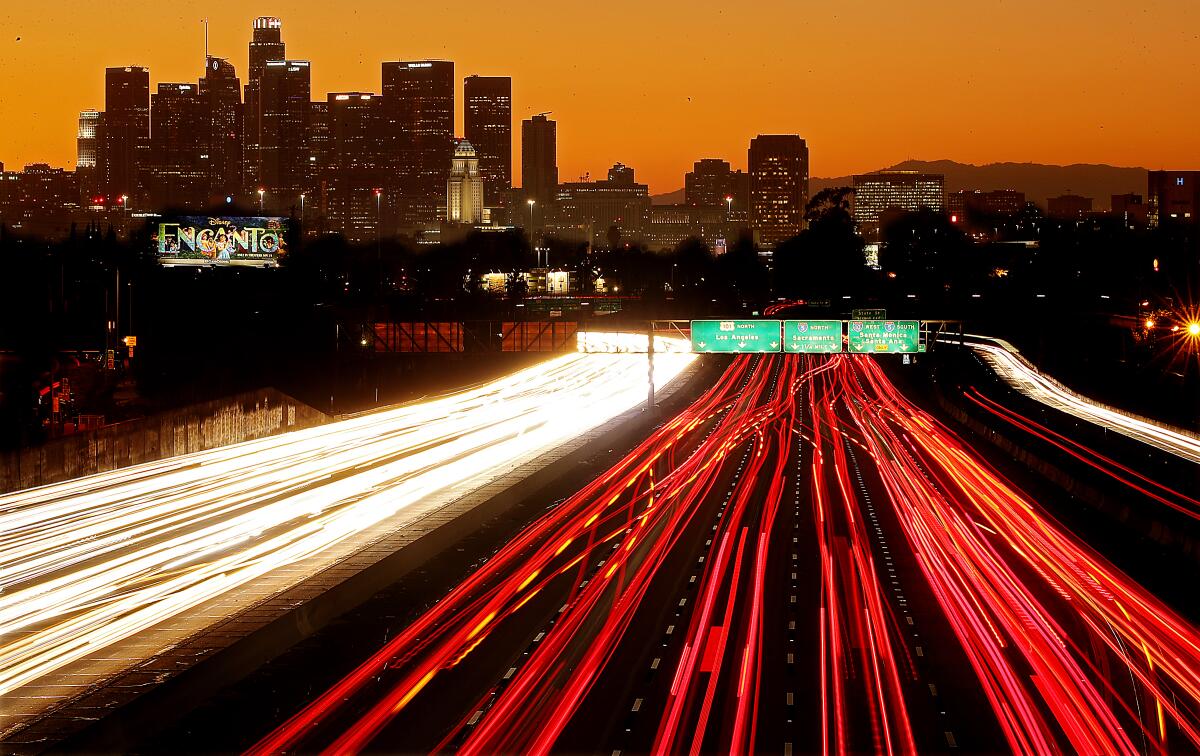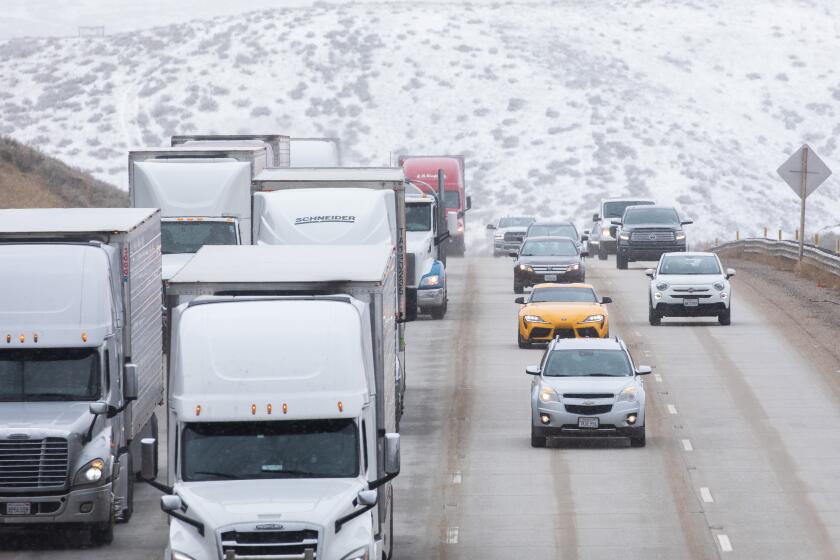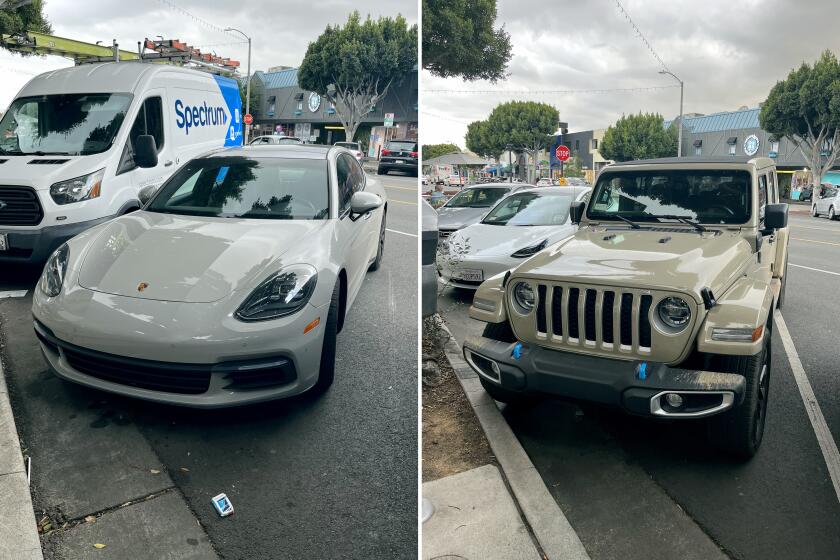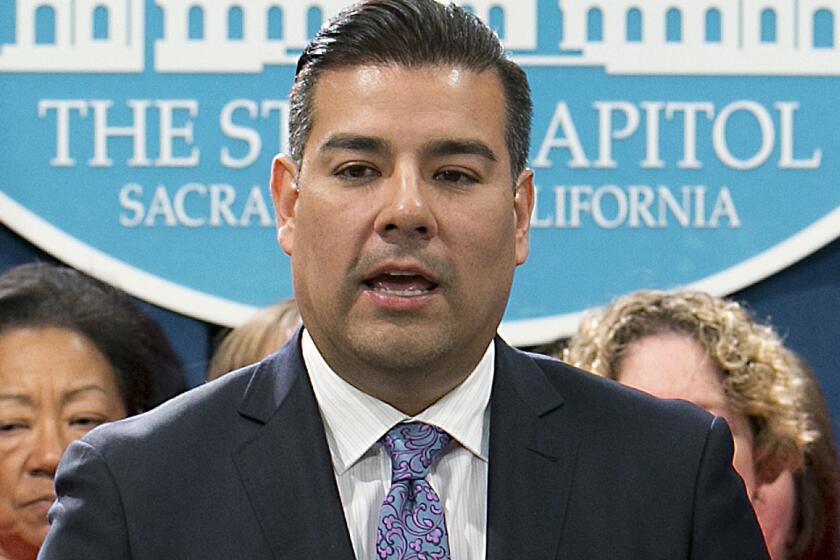California State Farm car insurance customers to see a $264-million rate increase

- Share via
California drivers who use State Farm for their auto insurance coverage are facing a premium increase of $263.7 million, the largest total amount approved since October by the California Department of Insurance.
State Farm insures more California drivers than any other company operating in the state. Those 3.7 million California drivers will see an average annual boost of $71 per policy, an increase of 6.9%, said Consumer Watchdog, a Santa Monica-based advocacy group.
The latest increase granted by California Insurance Commissioner Ricardo Lara follows rate hike approvals for several other large auto insurers, including Geico and Mercury Insurance, after a long COVID-19-era break.
In all, Lara has approved more than $1 billion in premium increases at the state’s top six companies, which insure about 48% of California registered vehicles. Consumer Watchdog called it “unjustified and excessive.” Low-income drivers will be hit the hardest, the group said.
“The department just rolled out, and rushed out, increases in each of these cases without full justification of any of them,” said Carmen Balber, executive director of Consumer Watchdog, adding that it ignores requirements to justify those increases that were spelled out in Proposition 103, the state law on automobile, homeowner and casualty insurance rates.
California car insurance regulators approved some big rate increases in the last six months after a long COVID break. And more are in the pipeline.
Balber saw “a disturbing picture” of the department “approving what is now over $1 billion in rate increases without the adequate oversight.”
Lara did not specifically address the State Farm case, but he said through a spokesperson that there was nothing excessive about the approved rate hikes.
“Commissioner Lara’s actions since July 2020 have returned more than $2.55 billion to auto consumers so far,” said Gabriel Sanchez, press secretary for the Insurance Department, “and he is continuing to review data from insurance companies to determine if they overcharged drivers during the pandemic.”
“Since 2019, Commissioner Lara has pumped the brakes on rate increases in California and protected consumers despite rates skyrocketing nationwide, holding increases to the lowest level in a decade,” Sanchez said.
State Farm in February reported record underwriting losses for 2022, saying: “While State Farm experienced unfavorable operating results in auto, State Farm Mutual Automobile Insurance Company remains financially strong.” State Farm, which writes auto insurance in all 50 states, said the auto segment accounted for a $13.4-billion underwriting loss on $45.7 billion of earned premiums.
Over the last decade, muted paint colors have taken over the automotive world. The understated shades, which are popular for sports cars and utility vehicles, will cost you.
State Farm spokesperson Sevag Sarkissian said in an email that the insurer is “continuously monitoring and adjusting to trends to make sure we’re matching price to risk.”
“As more people are on the roads, we’re seeing an increase in claims. Auto claim costs are being compounded by record inflation and supply chain disruptions. All of this has increased the cost of labor and materials, which translates to higher auto repair costs,” he said.
According to Consumer Watchdog’s running tally of rate increases approved so far, drivers with the Interinsurance Exchange of the Auto Club will be paying $75 more per insured vehicle. Those insured by Mercury will pay $80 more per insured vehicle. Geico drivers will see an annual premium increase of $125. Farmer’s drivers will be paying $98 more a year, and those insured by Allstate will see a $167 annual increase.
The state’s insurance department does not issue a public statement when it has approved rate increases. Most motorists will learn about the new premiums when their bills arrive in the mail.
The new round of hikes will come as an extra burden to California consumers who are already dealing with high interest rates and other inflationary pressures that have made credit card spending more costly, especially as more people rely on them for everyday purchases. Bankrate recently said that the average credit card interest rate has climbed to 20.05%, the highest since Bankrate began tracking rates in the mid-1980s.
Roy Persinko, a Southern California building contractor for the last 22 years, probably knows more than most about the effects of all of those increased costs.
“Everything in my business has gone up,” Persinko said. “But the cost of auto repair has gone up. Thefts are up. Am I thrilled about what I pay for car insurance? No, but it’s understandable.”
California waited longer than any other state to raise auto premiums after the pandemic eased, said Denni Ritter, a vice president at the American Property Casualty Insurance Assn. In their return to the roads, California drivers have been driving faster and, increasingly, while intoxicated, Ritter said, leading to accident injuries that are more severe, and they’re wrecking cars that have higher repair costs than in the past.
The nonprofit Consumer Watchdog says the California Department of Insurance approved a $268-million Geico rate hike without the public’s participation.
“Those are causing costs to really skyrocket in the auto insurance realm,” Ritter said.
Consumer Watchdog said that insurers’ claims that they have been hurting because they haven’t been allowed to raise premiums quickly enough are overblown and misleading. Moreover, the rising premium costs will not be shared equally among motorists and will unfairly fall more on low-income workers who will pay up to 25% more than professionals with college degrees at certain insurers, including Geico, the group said.
Harvey Rosenfield, author of Proposition 103 and founder of Consumer Watchdog, said the rate increases are being approved when the insurers “have failed to pay their customers for windfall overcharges during the pandemic lockdown, when people dramatically reduced their driving and accidents and insurance claims dropped.” Consumer Watchdog has estimated that motorists are owed billions.
Sanchez responded that Lara is “using every tool available to ensure consumers aren’t paying more than they should.”
More to Read
Inside the business of entertainment
The Wide Shot brings you news, analysis and insights on everything from streaming wars to production — and what it all means for the future.
You may occasionally receive promotional content from the Los Angeles Times.














